Yes, You Can Grow an Edible Garden on a Hot, Dry Site
http://decor-ideas.org 06/12/2015 00:14 Decor Ideas
Conventional wisdom about food gardens is to locate them in a sheltered position with deep, moist topsoil. But what if your only available gardening space is a windy, sun-baked hillside? There are still edible options for developing that sort of landscape, but it takes careful planning to do it successfully.
There are two main approaches to this common challenge, which are best used in combination: using the toughest food plants available and designing the landscape in a way that moderates the extreme conditions.
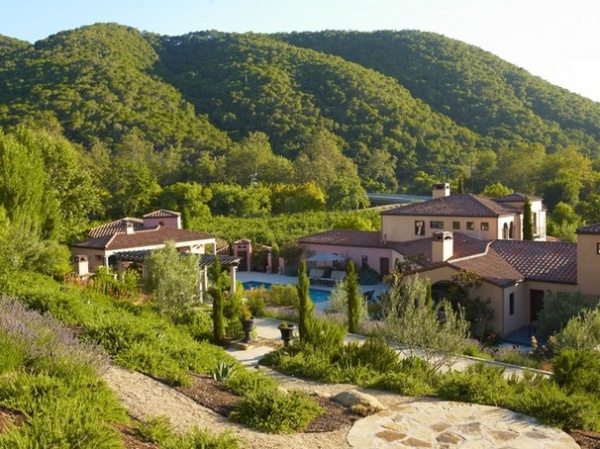
Look to Hot, Dry Climates for Inspiration
People have been growing food in arid landscapes for millennia. Take the Mediterranean region, for example, where vineyards with hundred-year-old grapevines can be found on dry hillsides, growing entirely without irrigation. The soil in the hills of southern France, Italy, Portugal and Spain is also very rocky and infertile, but the grapes don’t seem to mind — they are well adapted to the situation.
This Mediterranean villa has several olive trees planted above the house, along with rosemary, salvias and agaves, for a hybrid edible-ornamental landscape.
Grow a Mediterranean-style edible garden
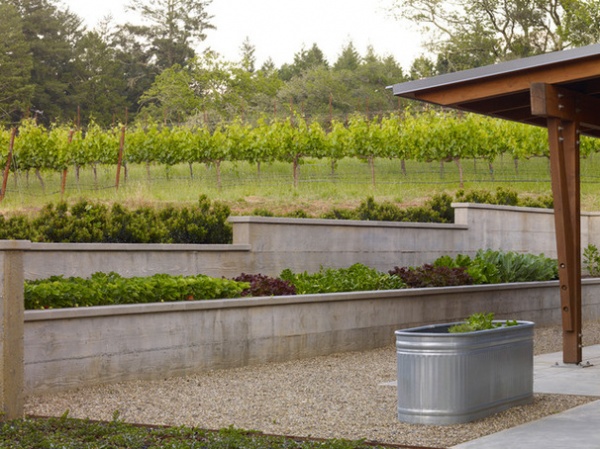
A home vineyard is a very classy way to develop a hot, dry hillside, whether you want to grow wine grapes, table grapes or both. Most of the other classic Mediterranean food plants are equally well adapted to conditions that other edibles would find brutal. Figs are a great example, as are olives.
This home vineyard also features terraced planters filled with lettuces and other edibles.
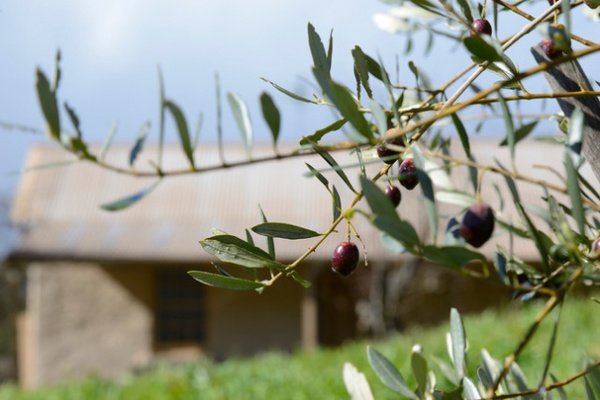
Olive trees (Olea europaea cvs, USDA zones 8 to 11; find your zone) can even be grown in the desert, as their small, gray-green leaves have evolved to minimize moisture loss. Established olive trees can survive winter temperatures down to 15 degrees Fahrenheit, but there are other edibles that are similarly heat and drought tolerant if you live in a cold climate.
The cold hardiest of them all is sea buckthorn (Hippophae rhamnoides, zones 3 to 8), also called seaberry, a large shrub that grows from the cliffs of the Mediterranean all the way to Siberia. Seaberry’s leaves look just like olive leaves, but the shrub produces a bright orange ultranutritious fruit. Seaberry is an underutilized edible, but keep in mind that it may spread on its own in some northern climates, though it is not considered a highly invasive plant.
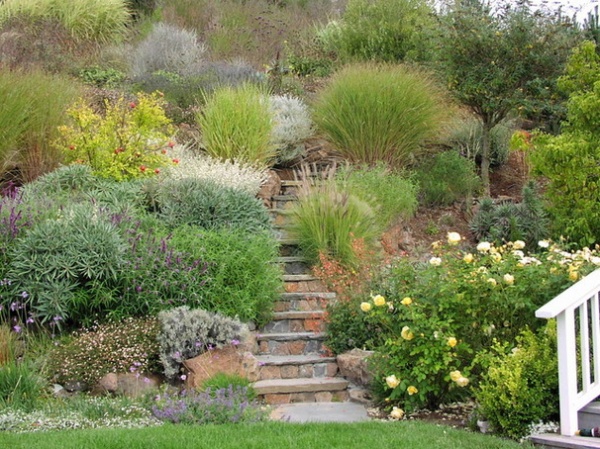
Pomegranates (Punica granatum, zones 7 to 11) are other fruit trees suited to tough conditions — not surprisingly, they also have narrow leaves to reduce moisture loss. Like olives, they are very charming ornamental edibles, producing 2-inch tubular red blossoms in early summer, followed by crimson red fruit that hangs on the branches like ornaments in fall.
Here, a shrubby pomegranate (near the top left) blends right in with large grasses and other landscape plants that help to hold the soil on steep slopes.
Other tough edibles suitable for slopes include apricots, chestnuts, jujubes and almonds.
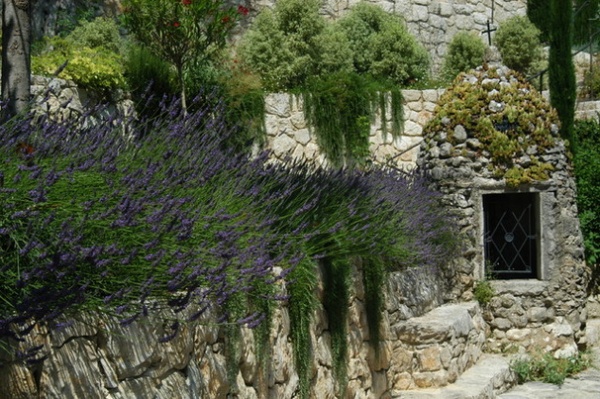
Focus on Herbs
While it’s possible to grow vegetables and common fruits like apples and blueberries on a hot, exposed site, you’ll have to work extra hard to moderate the conditions for these more sensitive plants. But interestingly, most savory herbs are very well adapted to these conditions — and their flavor is more concentrated than when they are grown in moist fertile soil.
Rosemary, lavender, thyme, oregano, sage and savory are some of the best options, and they are all highly ornamental perennial plants that lend themselves to landscape design.
11 Essential Herbs for Your Edible Garden
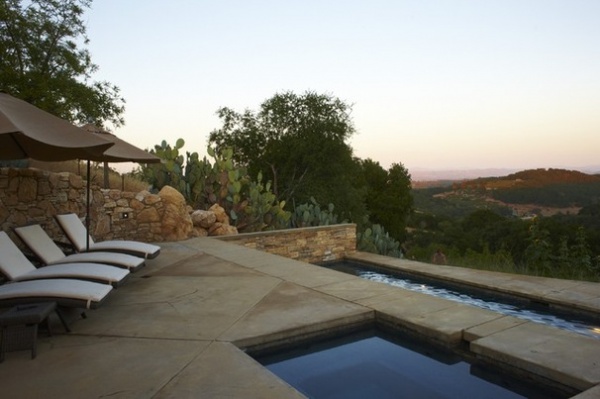
Think Beyond Standard Food Plants
This hillside landscape includes a border of prickly pear cactus (Opuntia sp), one of the most important edible plants for desert regions. Also known as desert fig, this type of cactus makes a delicious fruit and grows quite well in nondesert areas, too.
Prickly pear is so tough, it’s hard to kill, and some species are hardy down to USDA zone 3. Even the cactus pads are edible — in Mexico they are one of the most commonly eaten vegetables.
See how to grow beavertail prickly pear and Santa Rita prickly pear
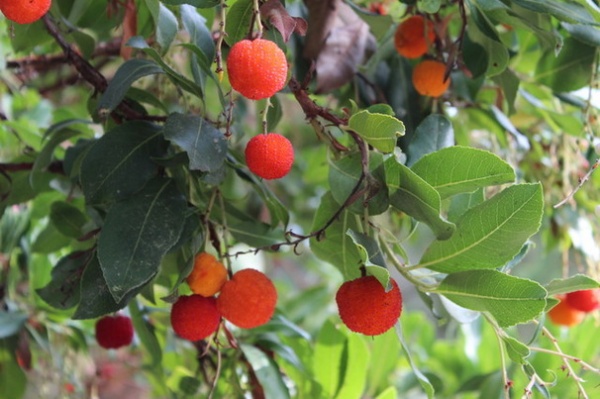
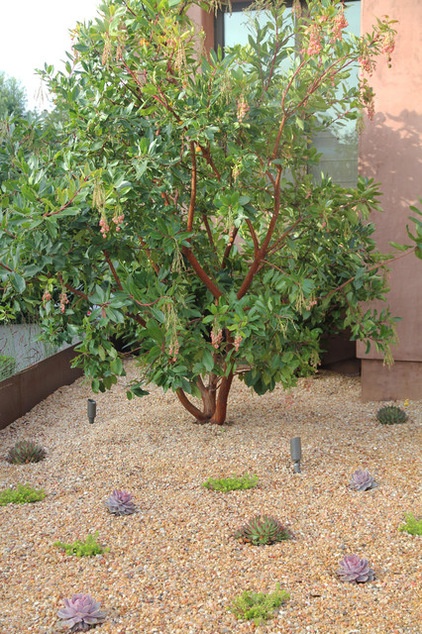
The strawberry tree (Arbutus unedo, zones 7 to 10) is another unconventional edible to consider. Here we see Arbutus ‘Marina’, a more ornamental hybrid with an edible fruit.
Strawberry trees are normally thought of as ornamentals — they have smooth red bark and a delightful leaf and branch structure — but their red, golfball-size fruit is entirely edible. Strawberry trees are very tolerant of heat, drought and poor soil.
See how to grow Arbutus ‘Marina’
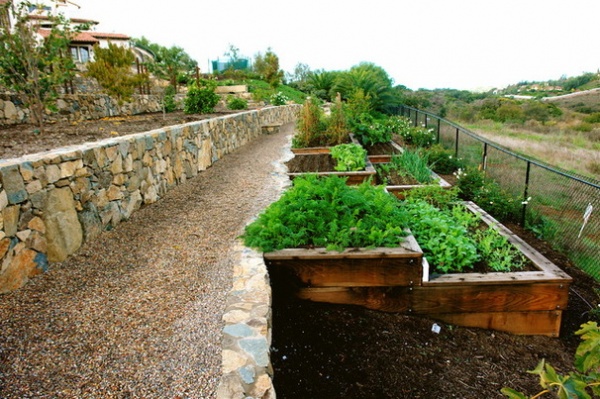
Use Terracing to Your Advantage
Terraces create flat, usable garden space on a slope, but just as important, they allow rainwater to infiltrate the soil, making dry slopes a bit moister. They also ensure that the soil stays put and allow you to build up a rich topsoil to support a greater diversity of crops.
See how to step up your garden game with terraced planters
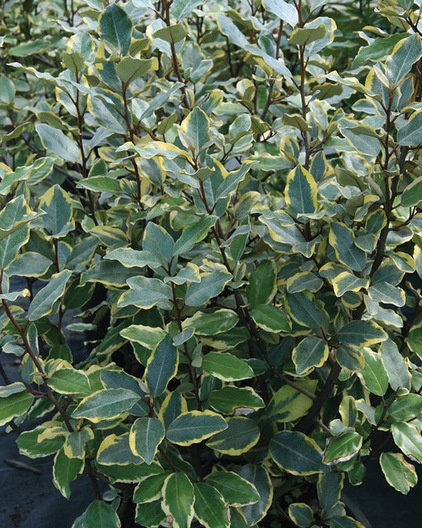
Provide Protection
Exposed hillsides are typically very windy, which can be as much of a challenge for plants as heat and drought. Wind desiccates the leaves and can physically shred the foliage of vulnerable plants. Even if you are planting well-adapted species, they will grow even better with a windbreak.
Many tough and hardy shrubs can protect your hillside garden, but few are edible. Elaegnuses (Elaegnus spp) are one exception; they are known by many common names, including goumi, Russian olive, autumn olive, silverthorn and silverberry, depending on the species. All produce a small but tasty edible berry. The hybrid form pictured here, Elaeagnus x ebbingei ‘Olive Martini’, is hardy down to zone 6.
Caution: Some Elaegnus species are highly invasive in some regions, but if you stick to the hybrid cultivars (like the one shown here), spreading is generally not a problem.
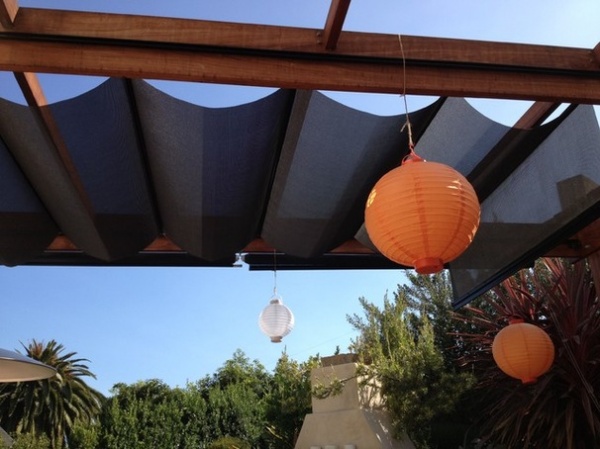
In addition to windbreaks, consider protection from above. It will be easier to grow sensitive plants if shade is provided. The shade could be provided in the form of tree branches that create dappled light on and off throughout the day, or shade cloth can also be used. It’s most important to provide sun protection from the midafternoon onward. Even things that would normally be classified as needing full sun — like raspberries and asparagus — appreciate a bit of shade on a south-facing hillside.
6 Patio Cover Types to Shade You in Style
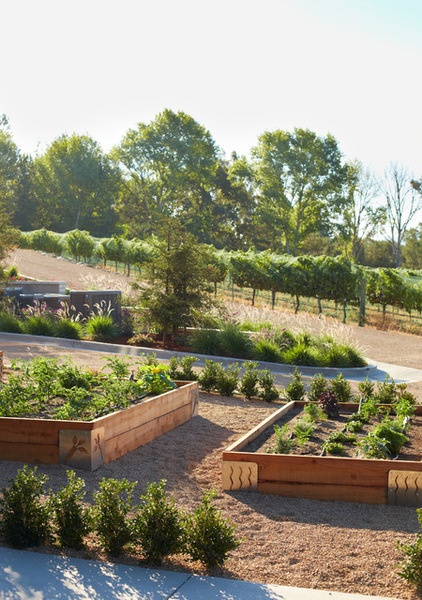
Finally, make sure to protect the roots with mulch when subjecting tender edibles to a hot, sunny slope. Even salad greens can benefit from a thin layer, while trees and shrubs can take up to 6 inches of mulch. The mulch conserves moisture and helps prevent erosion, as well as helps keep the roots cool.
More:
How to Design and Plant in Dry, Sunny Spots
Browse more guides to gardening with edibles
Related Articles Recommended












